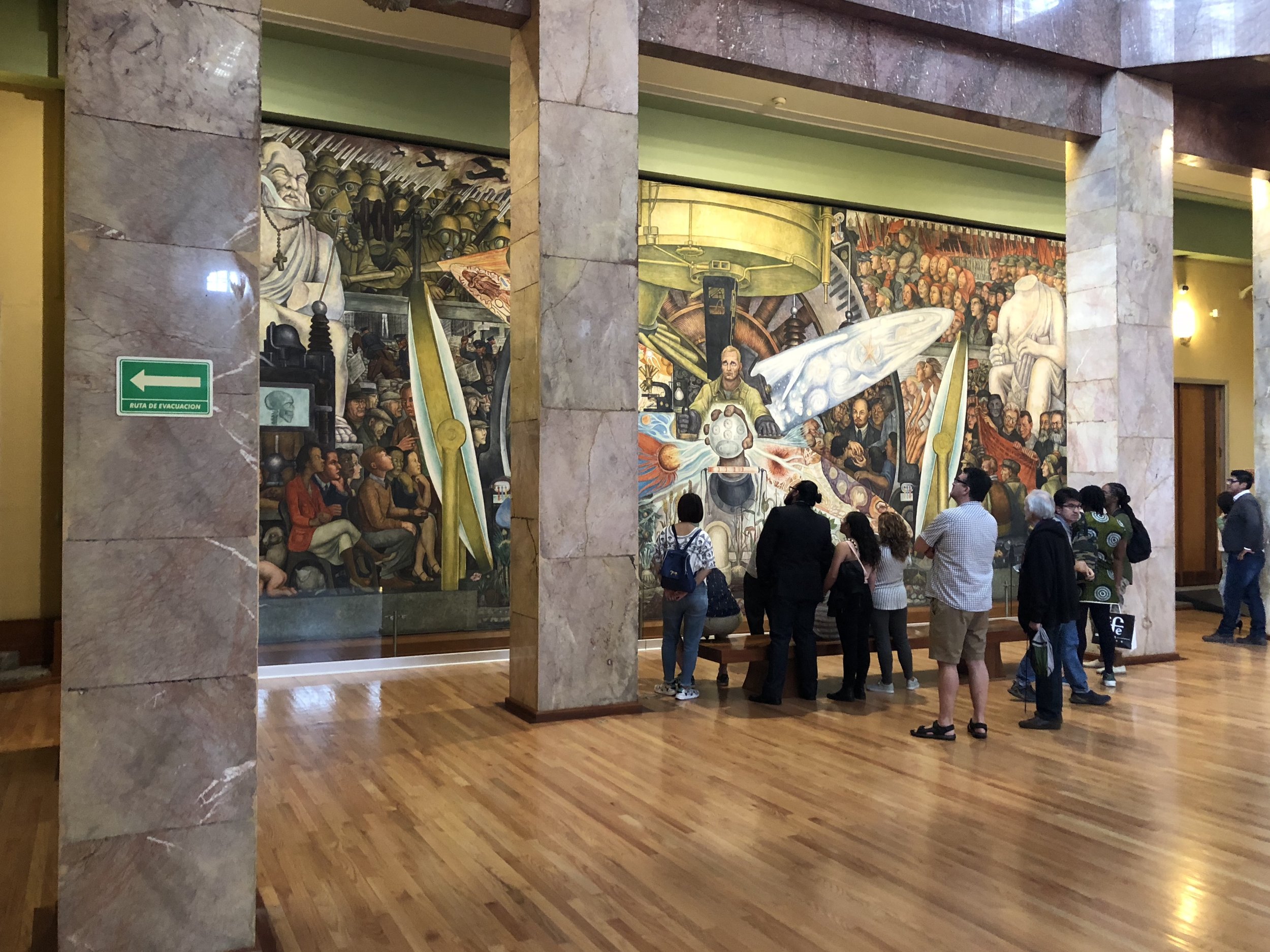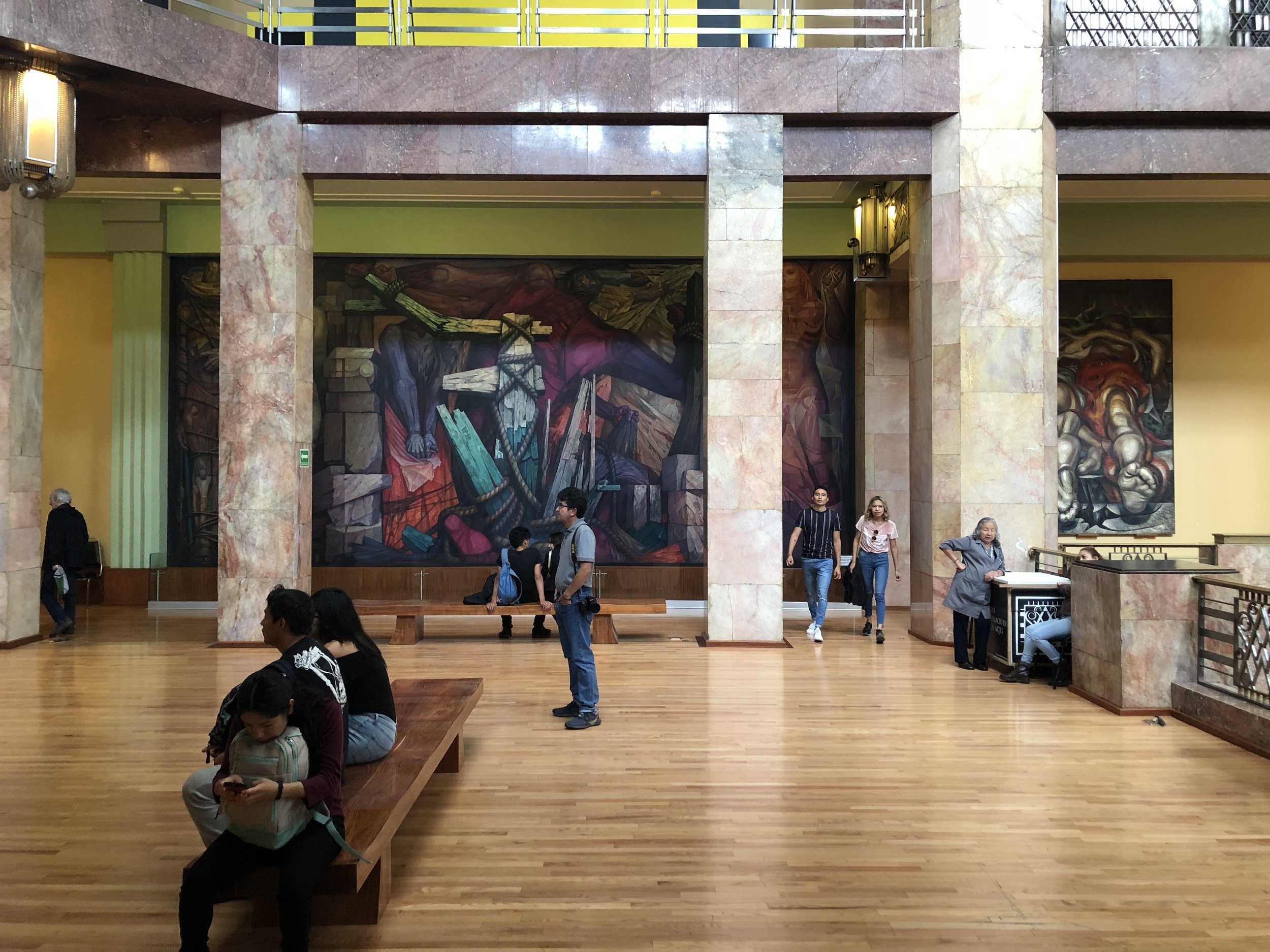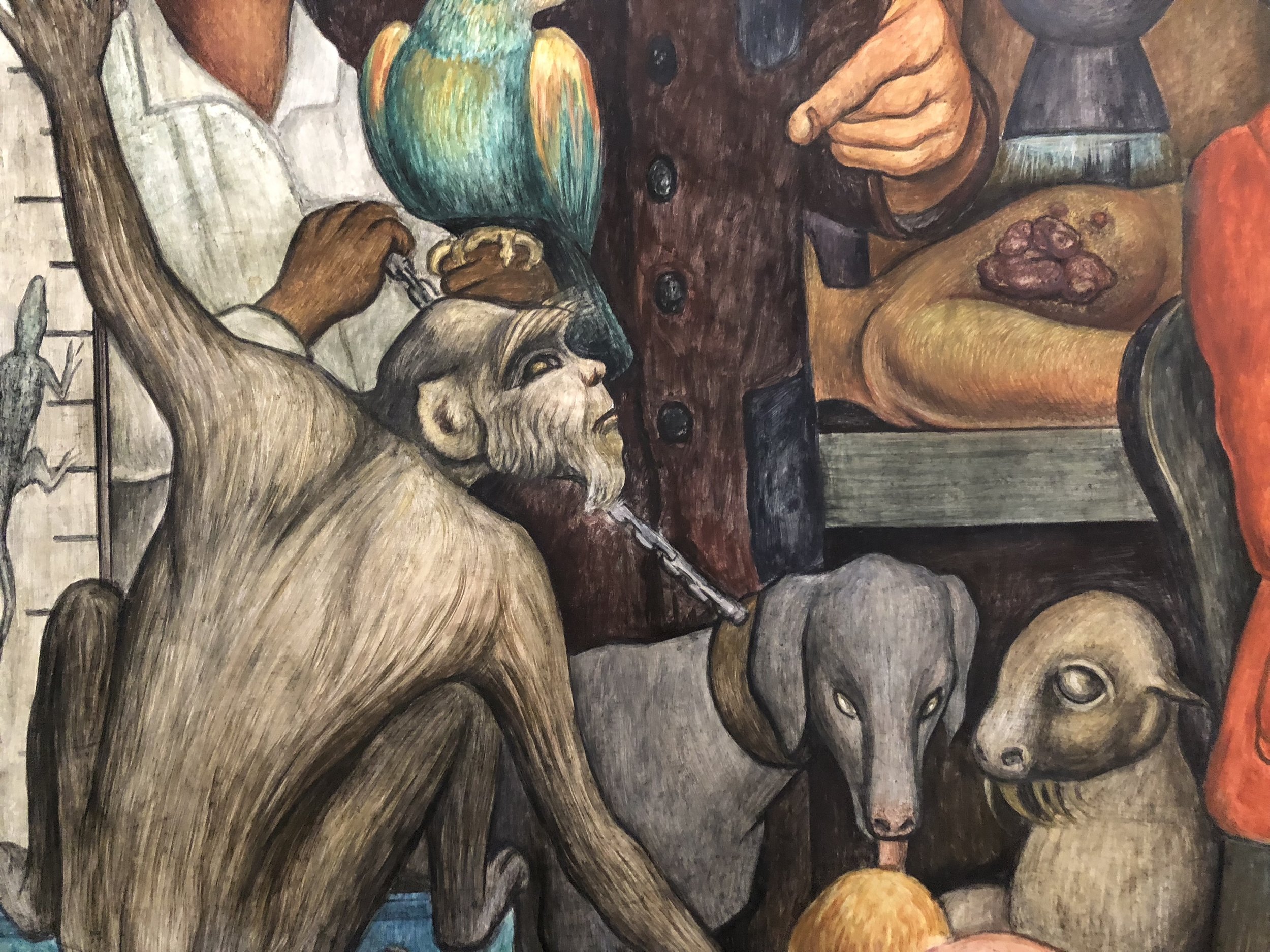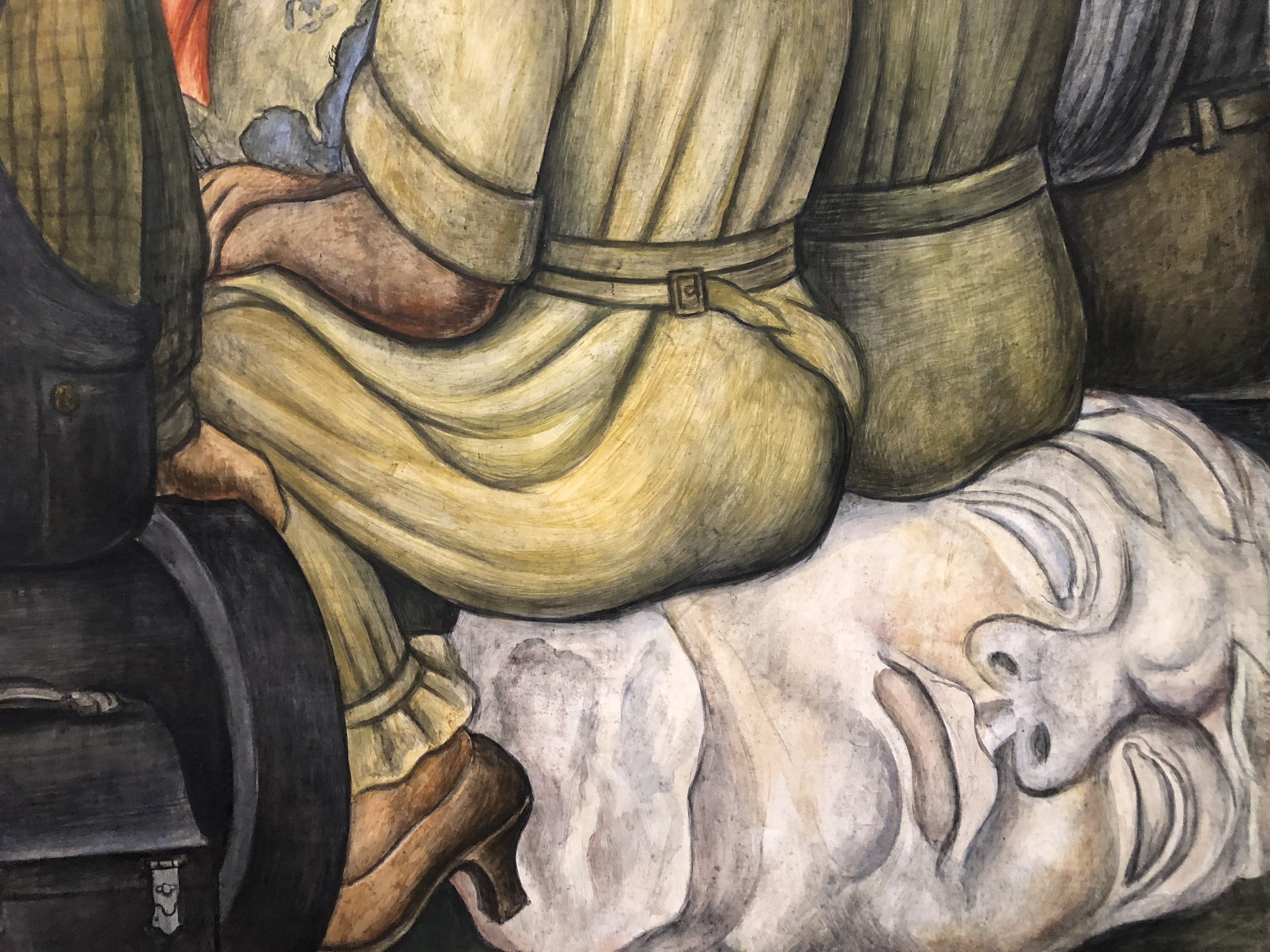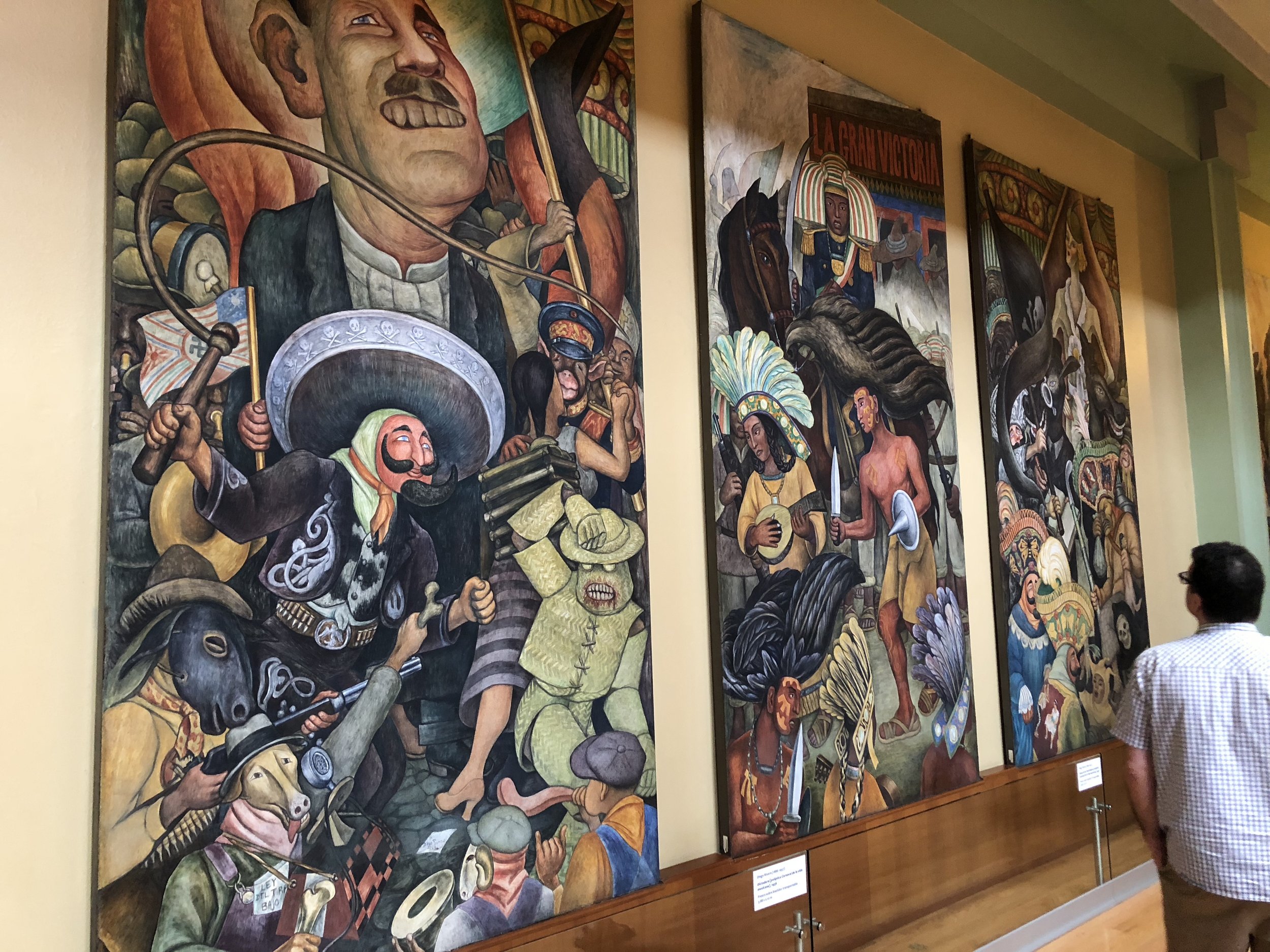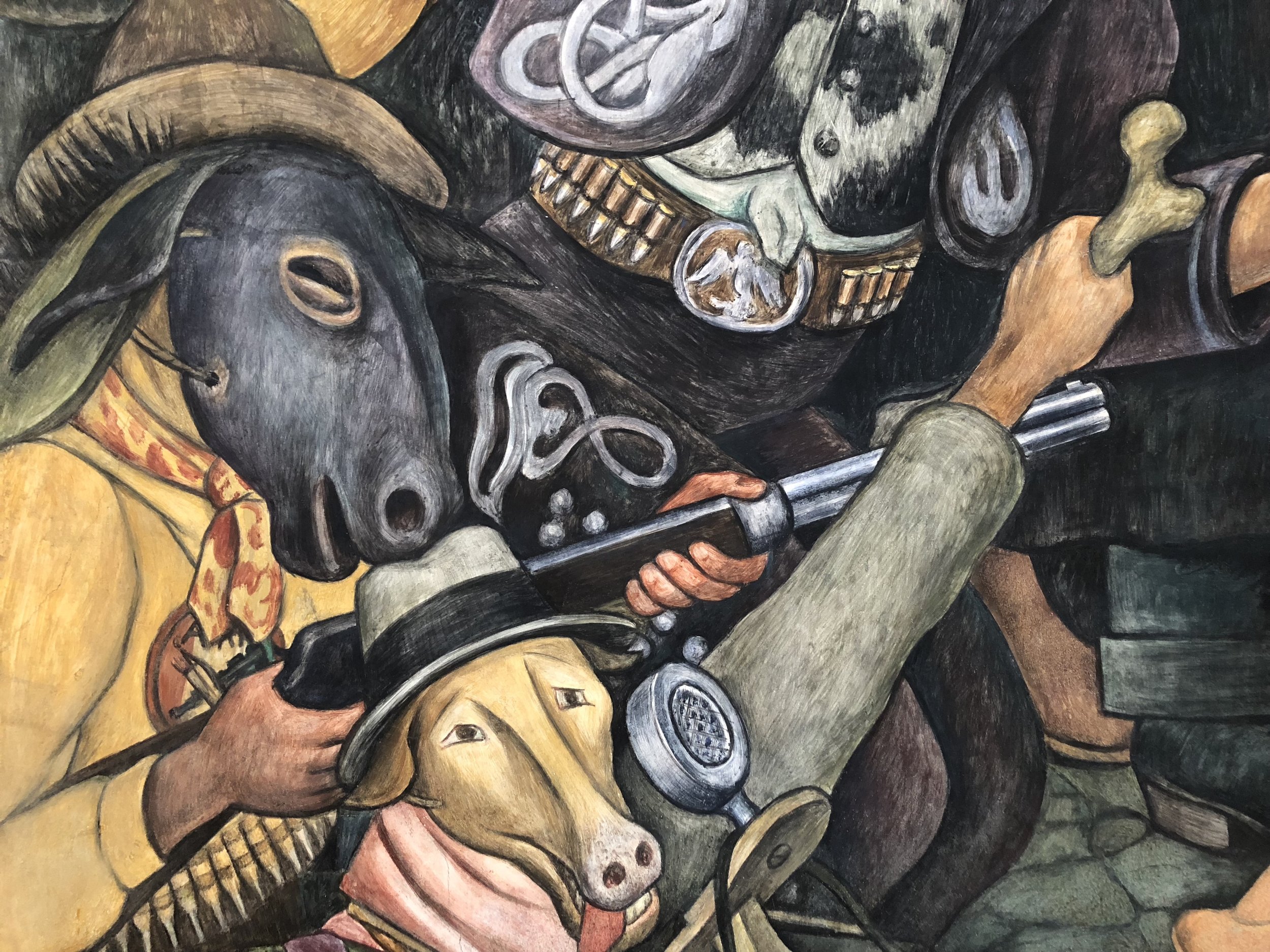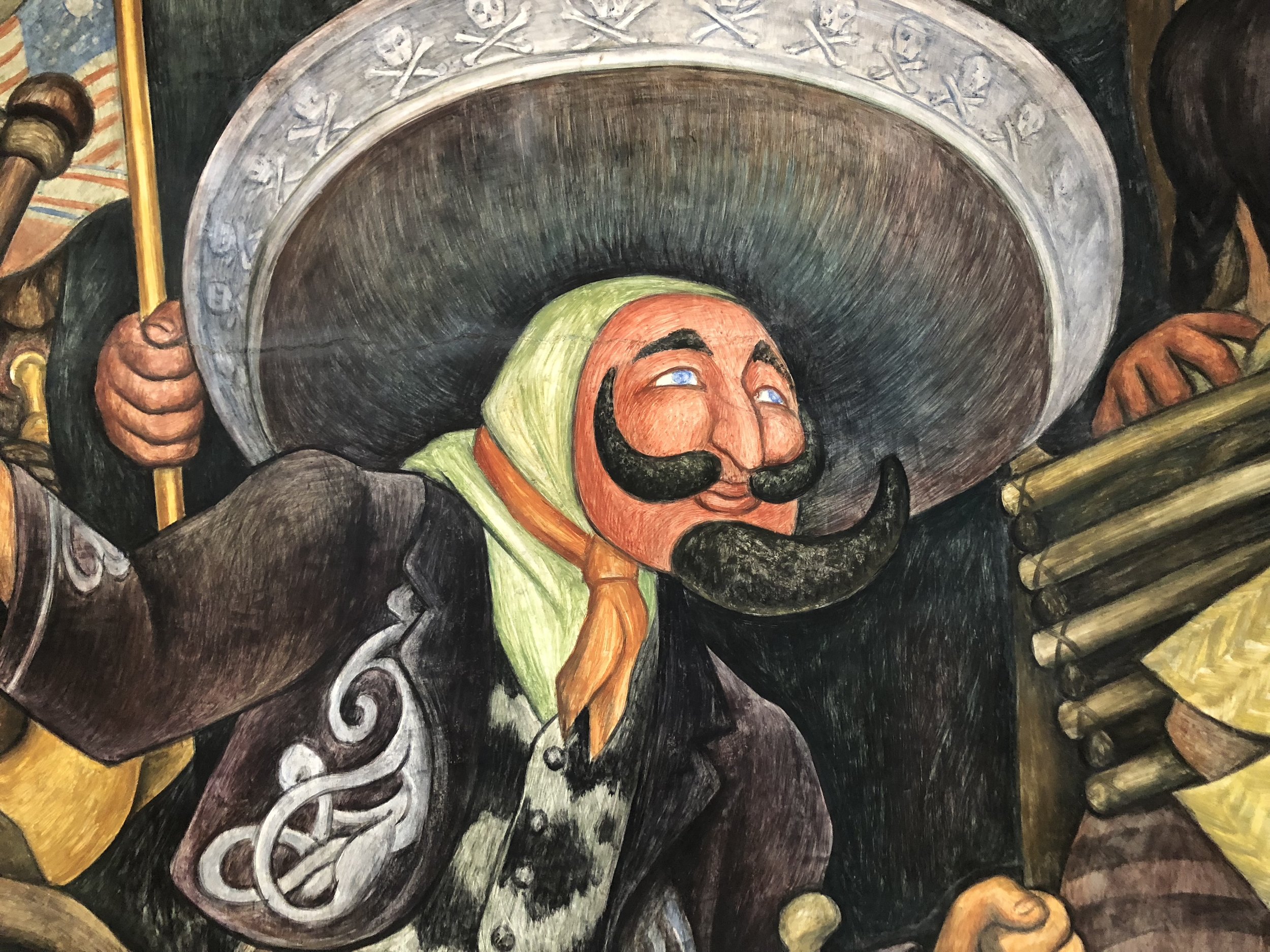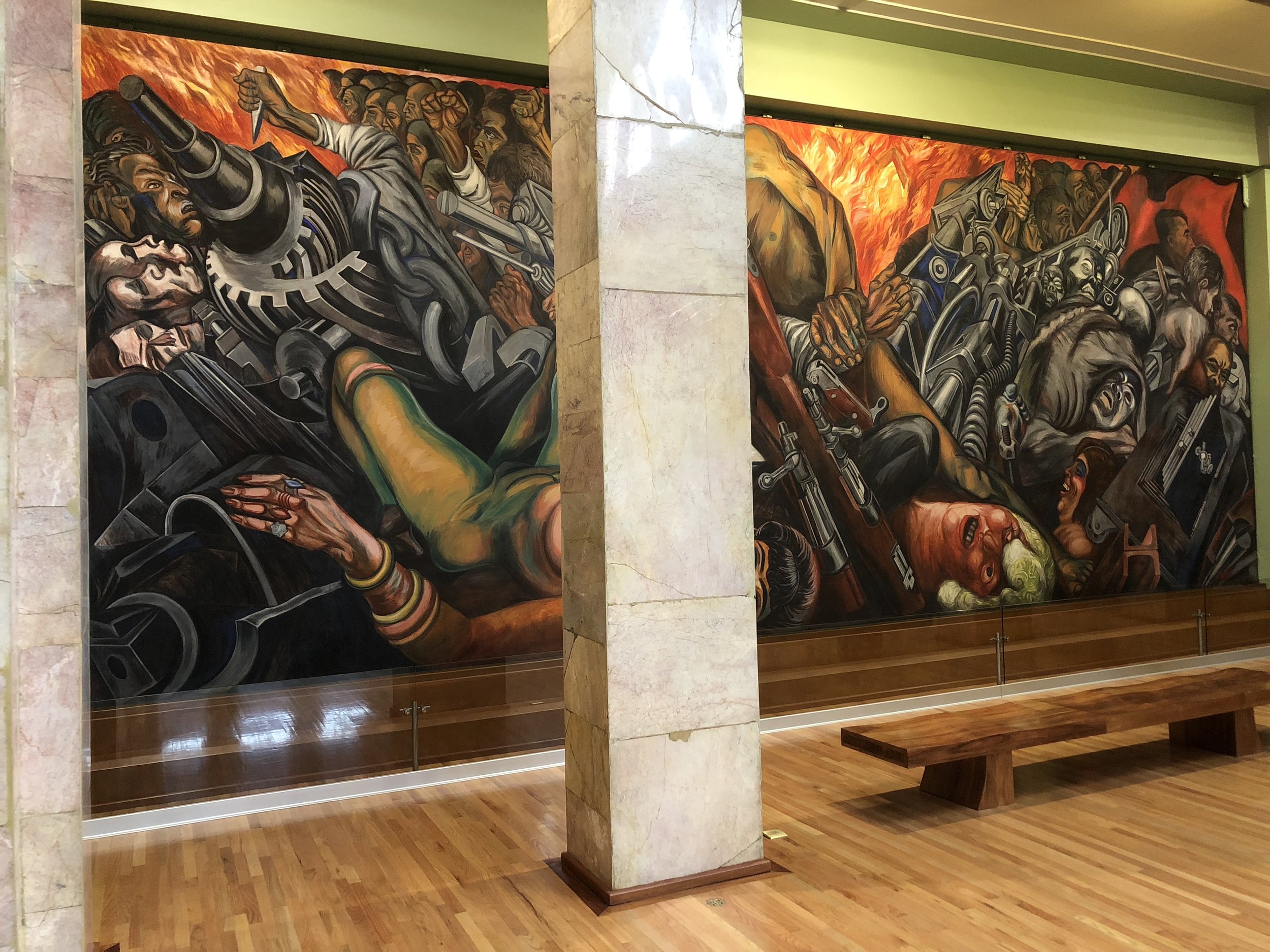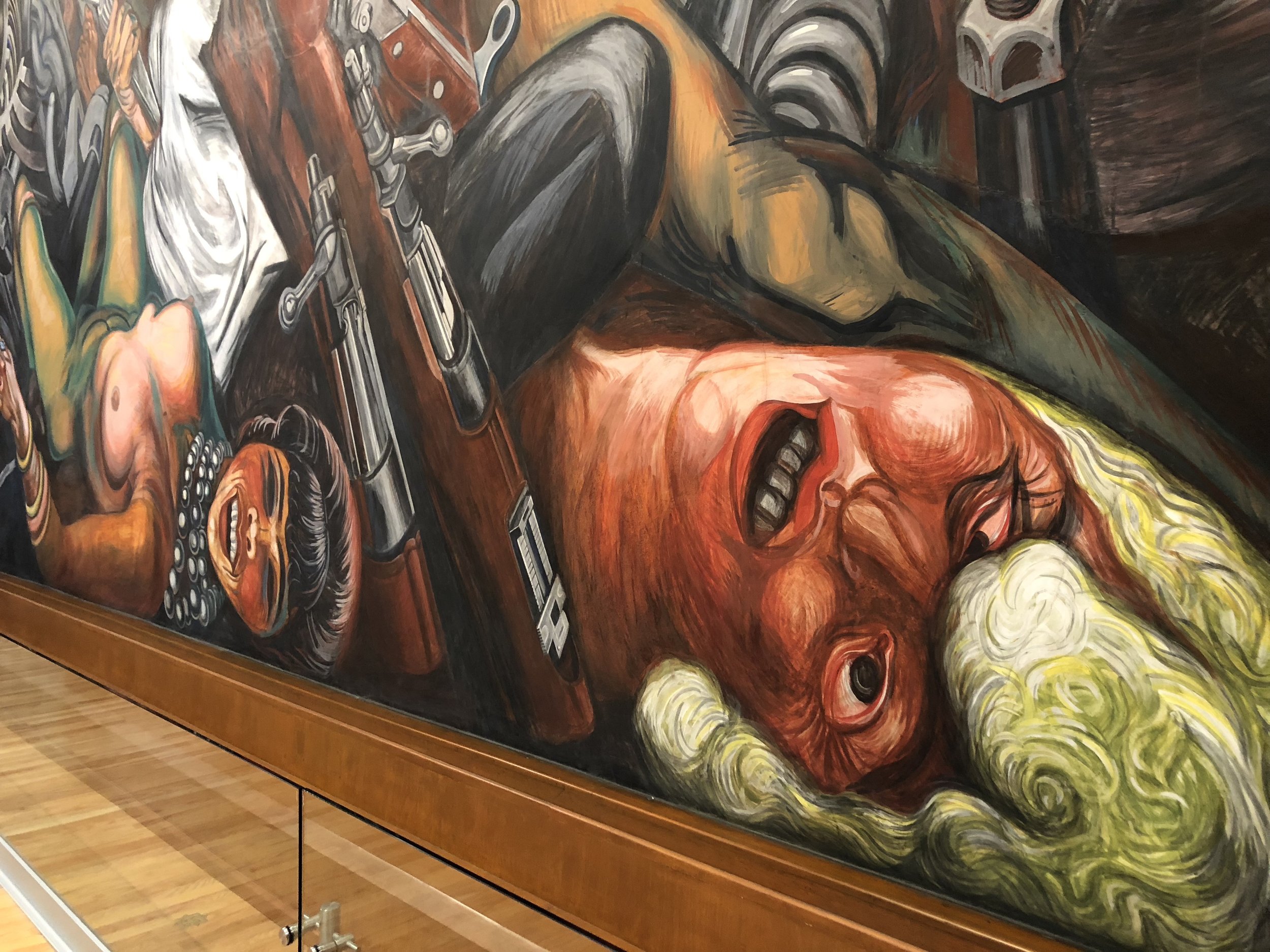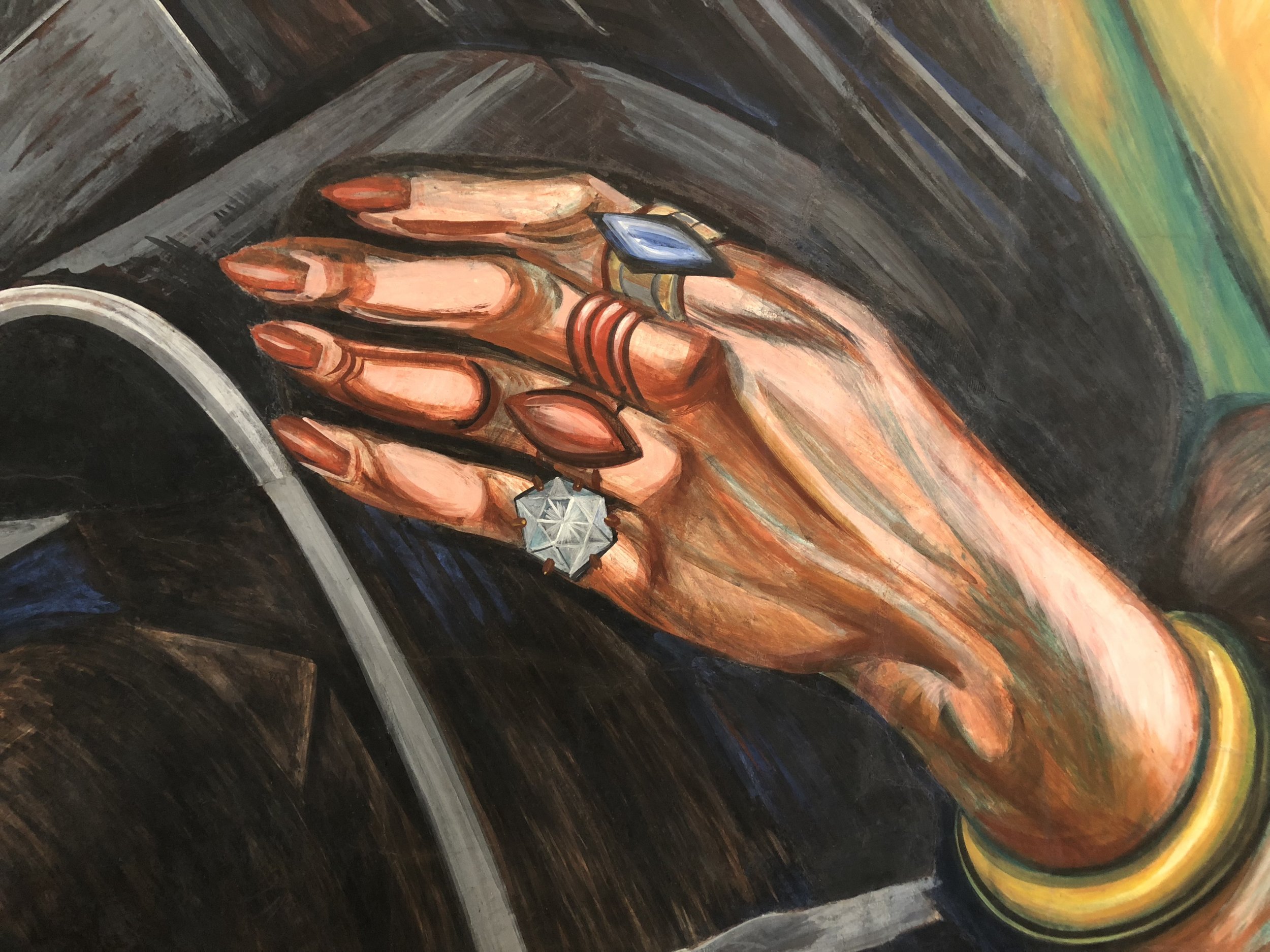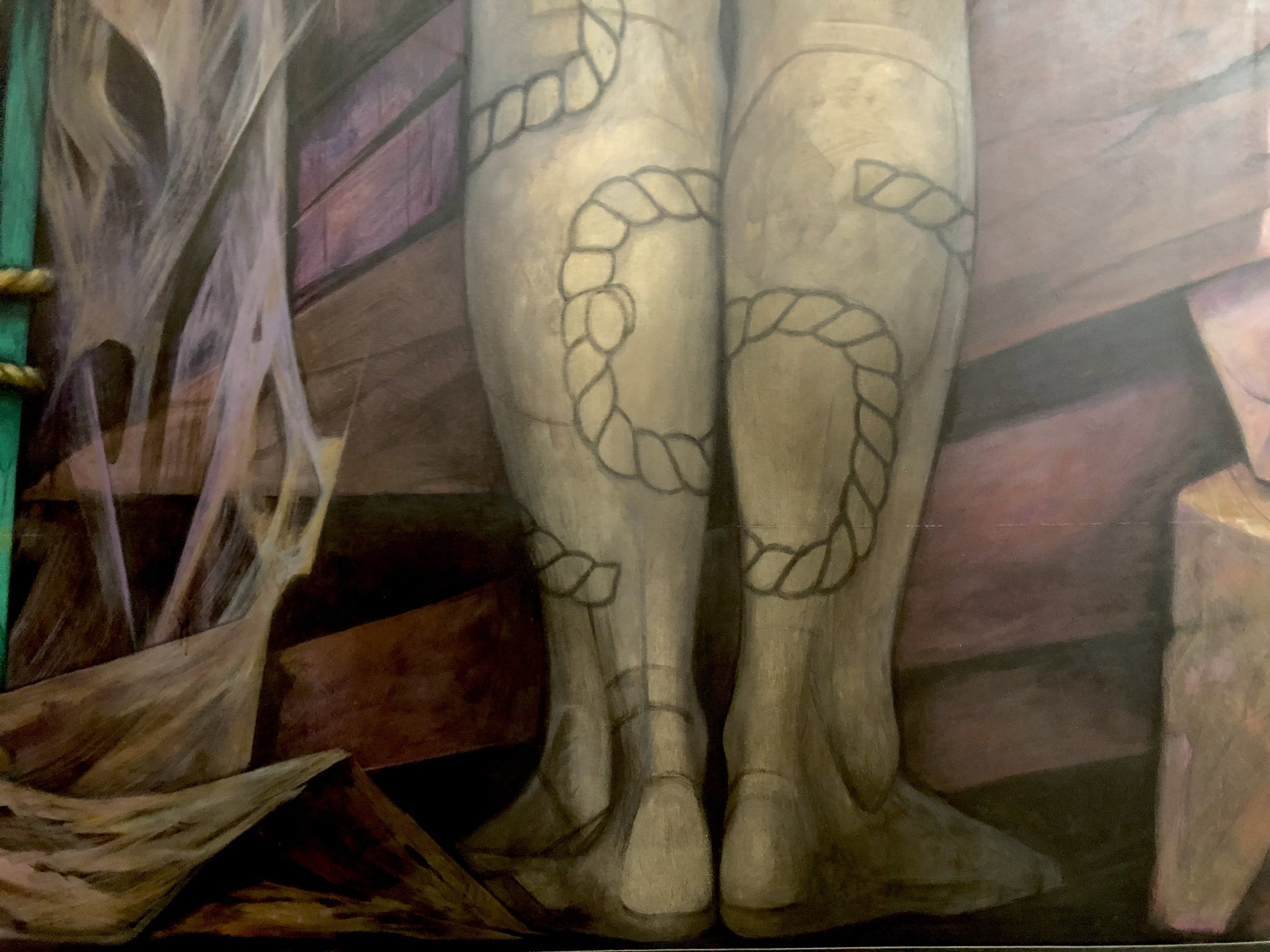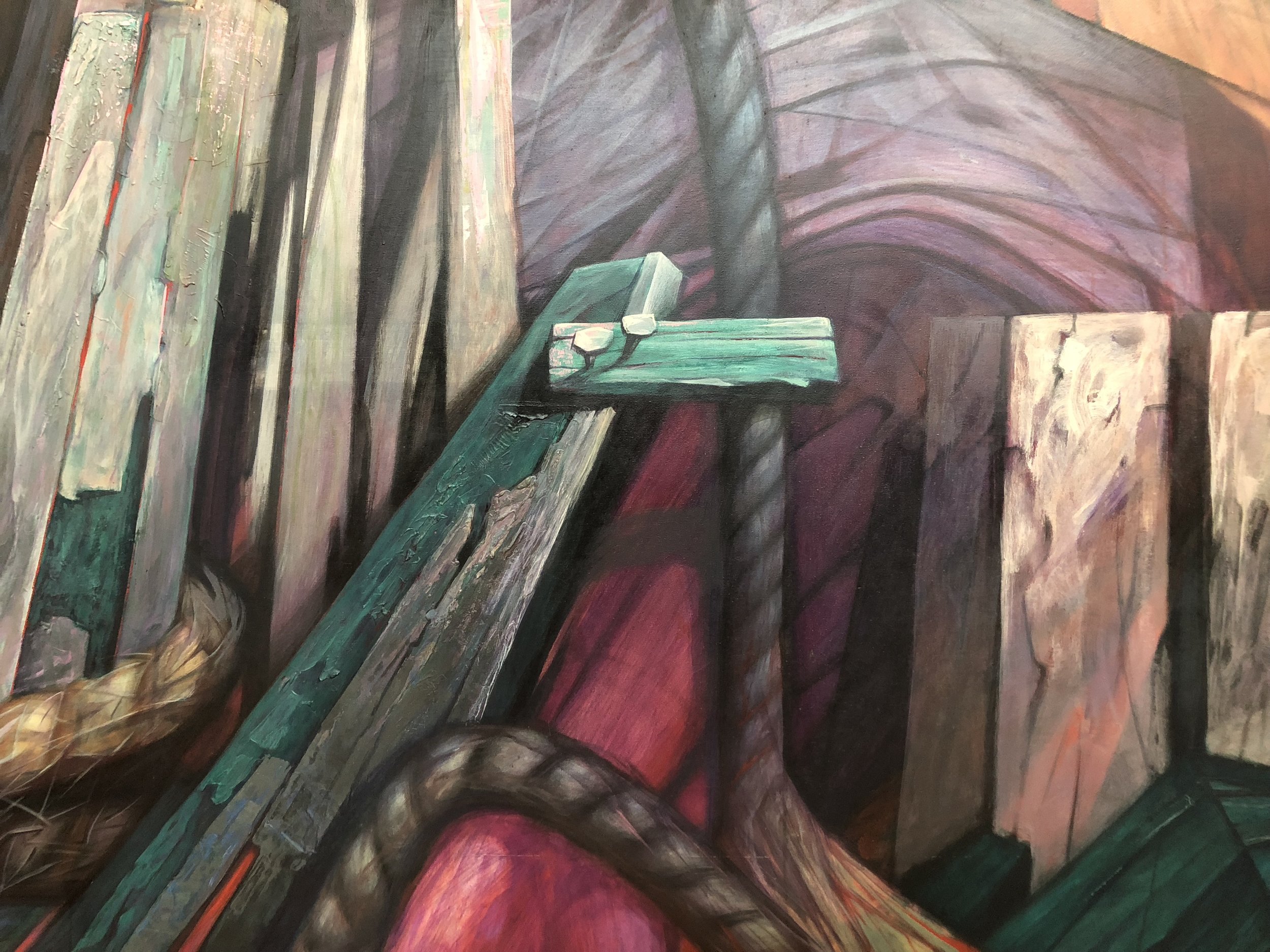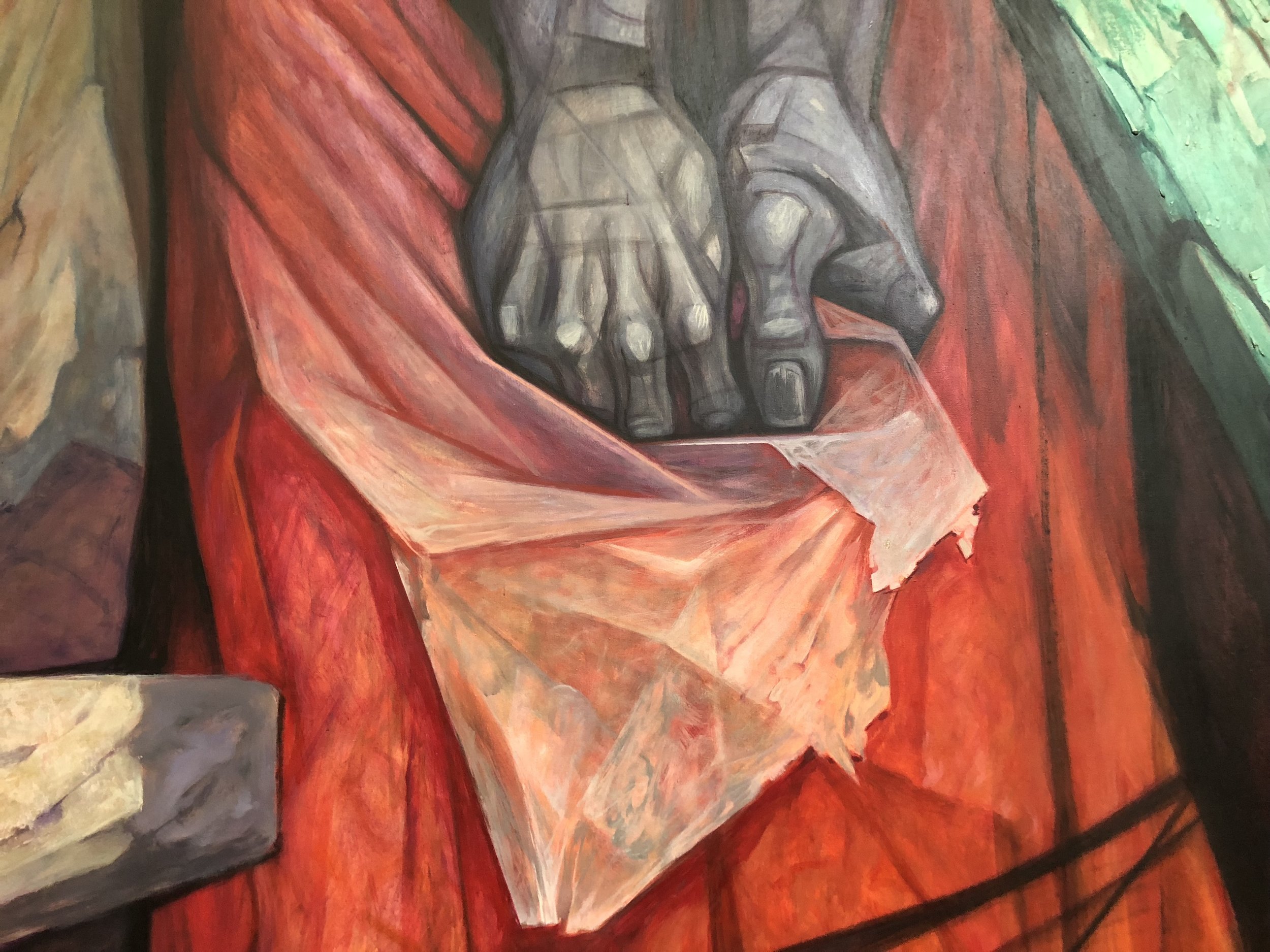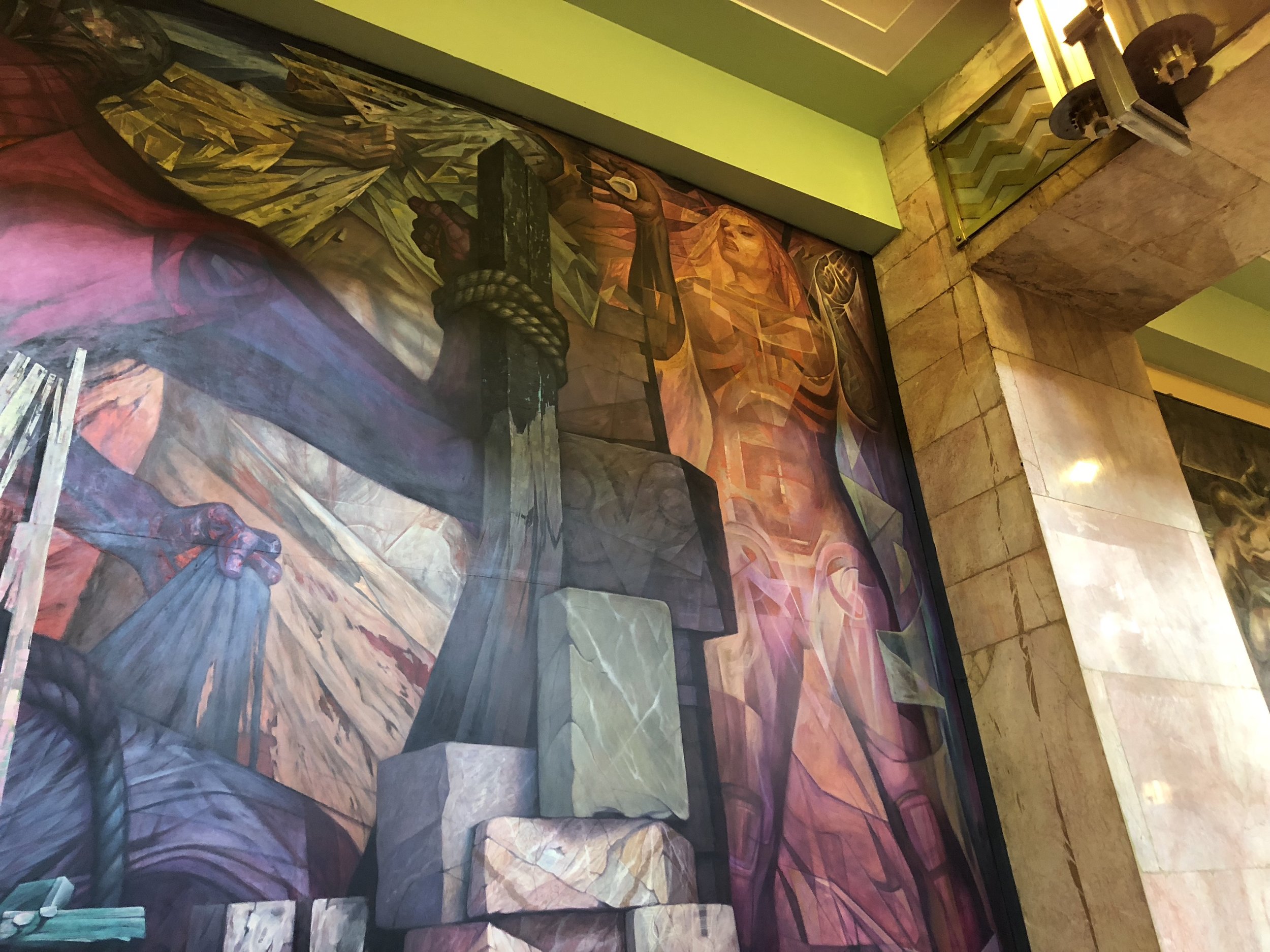I recently visited the Museo del Palacio de Bellas Artes in the Historic Center of Mexico City to view the current exhibition for Mexican modern artist, Ricardo Martínez de Hoyos. The show was titled Desde del Interior (From the Interior), and highlighted the entire process Martinez used to create his iconic paintings often depicting the human form with a minimum color pallet and mathematically precise compositions.
After walking through the small but wonderful exhibition for Ricardo Martinez, I wondered up to the top floors of the Museum to view the incredible murals by Mexican muralist giants: Diego Rivera, José Clemenete Orozco, Jorge González Camarena, and David Alfaro Siqueros. As you can see below, I took plenty of photos.
Man, Controller of the Universe by Diego Rivera
The first mural you see as you walk up the stairs is Man, Controller of the Universe by Diego Rivera. Naturally this mural drew the most attention, and had over a dozen people gaping at and examining the infante detail of the piece.
Originally the image was intended for the Rockafeller Center in New York, but after Rivera placed an image of Vladimir Lenin in the mural, the Rockafeller family had it destroyed mid-construction. The mural is divided in two halves, with the proletariat worker as the central icon.
The left hand side is a critique on capitalism, depicting class-struggle and images from WWI, the right hand side of the mural depicts Rivera’s image of an ideal socialist society and features socialist leaders such as Karl Marx, Friedrich Engels, Leon Trotsky and Bertram D. Wolfe.
Carnaval de la Vida by Diego Rivera
Inspired by the Huejotzingo carnival, this polyptych consists of four transportable panels, which Rivera originally painted in 1936 to decorate the Hotel Reform; but because of its strong political message, it was withdrawn from public view until moved to the Palace of Fine Arts in 1963.
The first panel portrays a giant holding a flag with the colors of several nations: Germany, Italy, the United States and Japan; the figure combines features of Hitler, Mussolini, Roosevelt and Hirohito.
La Katharsis by José Clemente Orozco
After finishing the murals of the Baker Library at Dartmouth College of New Hampshire, Orozco was invited by the Ministry of Public Education to paint this mural in the Palcio de Bellas Artes.
Executed in 1934, the mural was designed as a warning against the dangers of the rapid advancement technology; it displays anarchy and social degradation. Orozco argues that redemption is only possible through the destcution of society as it currently stood.
Liberación by Jorge González Camarena
Inaugurated in 1963, this mural by Jorge González Camarena is broken into 3 parts, each part represents a different phase in Mexico’s history.
The first phase is slavery, depicting a peasant lying in a coffin and a nude female figure covered in tattoos, which refer to the prejudices and prohibitions of the time. The second section depicts several men shedding their bonds of slavery, referring to the liberation of the people. And the final section depicts a mestizo woman holding a corn seed (an symbol of wisdom and life) who dedicated to spiritual liberation.

